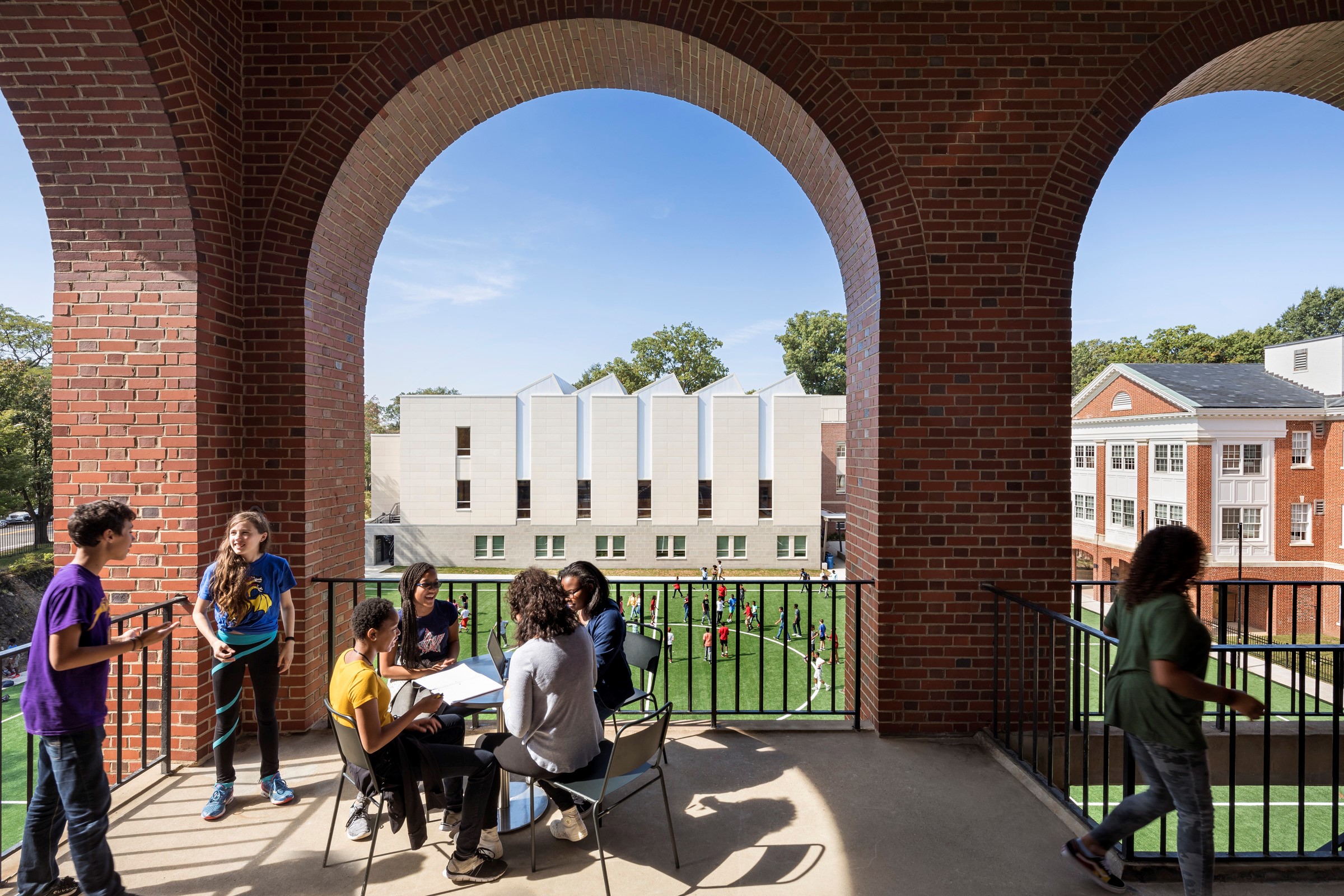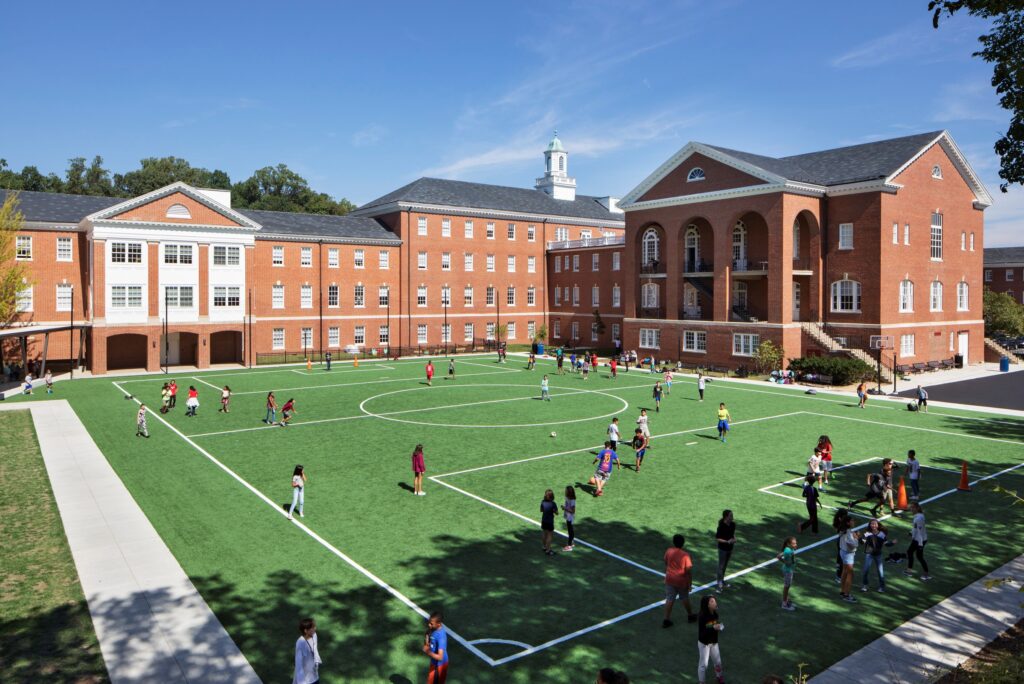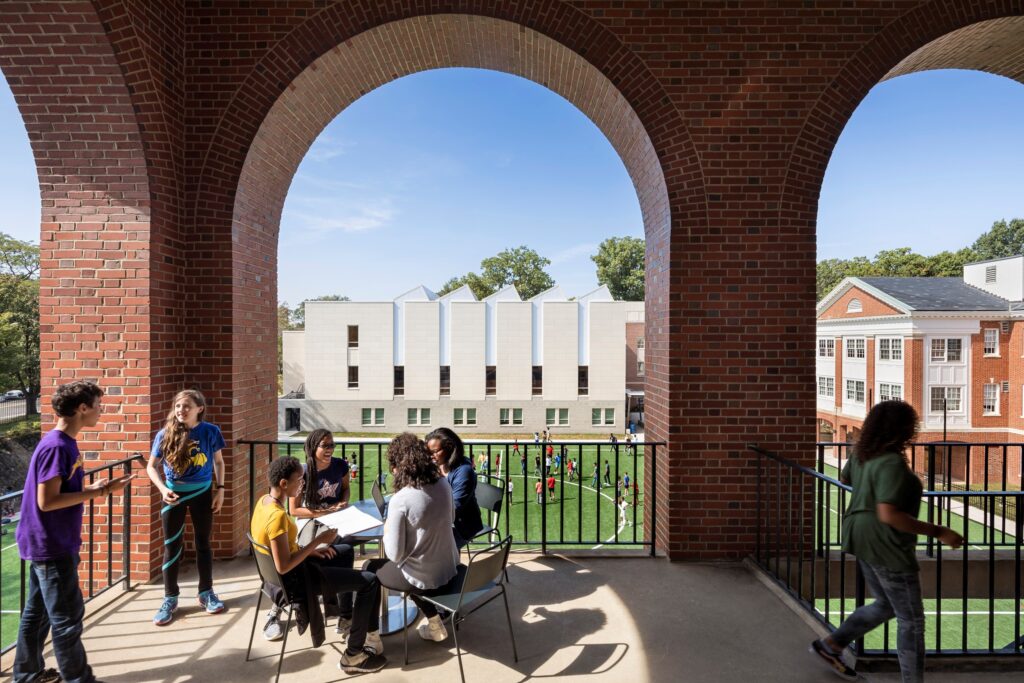
Perkins Eastman Associate Principal Ann Neeriemer, AIA, is no stranger to taking an existing space that served one purpose historically and designing it for today’s students and teachers. With previous projects primarily in the DMV area, Neeriemer is now based in Raleigh, NC and leads the education division for Perkins Eastman’s offices in the Carolinas. She discusses several adaptive reuse education projects, including a nurses’ dormitory on the Walter Reed National Military Medical Center, now the site of the District of Columbia International School (DCI).
Transforming a historic, military dormitory into a language immersion school is unique enough, but what do you think makes this project special?
The central zone of DCI was used as the centerpiece of the dormitory which had been their gathering place with a kitchen and dining space. Taking that middle zone that was previously kitchen, dining, and ballroom and turning it into a “Learning Commons” for the school, which is now the student’s dining, library, and performance space was pretty cool and unique.
One other significant feature of the school is the classrooms. They’re very long and skinny, which means you can’t teach in a lecture style, and that was intentional, and we studied different ways to fit classrooms in that footprint using the existing structural columns, and settled on the long and skinny fit. The school’s director and founder liked design because it matched the International Baccalaureate teaching style and methods and fostered a more engaging environment. The shape of the classrooms was pushed in that direction but it also happens to serve DCI’s program very well.

What goes into the process of assessing an existing space for education?
There are four main categories to factor in when assessing. First, is the condition of a building you might acquire. Has it been vacant for a long time? How old is it? Are there records or drawings of the space?
Then you would look at program accommodations. What is your school? How big does it need to be? Does the square footage match? Does the space have the type of space to accommodate the spaces the school needs, like a gym, a cafeteria, science labs, art spaces, gathering spaces?
Then you consider safety and security. How many points of entry are there? From a site standpoint, we look at arrivals and ability for kids to walk or bike to school. How is the building situated within a community? Potential bus loops and car drop-off lines?
The last category assesses amenities. Does the site have a nice space for outdoor use? A playing field? Can you arrange the design so that all classrooms have natural light? We think about those types of things to make it a high-performance learning environment.
Perkins Eastman has a whitepaper on this topic. At the back, there’s a worksheet that’s useful for clients and designers.
Tell me about some of your other projects that you’ve worked on that have been transformed into teaching and learning spaces.
Capitol Hill Day School is in a historic school building on the main campus, but they don’t have any new space to grow on their site. They acquired an 1870s stable building a few blocks away. It’s a three-story building and has obviously really high ceilings plus a loft where offices and conference rooms are located. But the open space, the common space for the kids, has a high bay space with the original wood beams and gives it a unique character. The building has party walls and only has windows on the two skinny ends, so we couldn’t do conventional classrooms and the school didn’t want to. We designed two classroom spaces, and the center of the building is a great commons zone with different seating and it’s very flexible.
Basis Independence School in McLean, Virginia was a former office building, which is very relevant today, and has a very big, deep footprint. And one of the things we looked at was the amount of natural light and fresh air into core learning spaces, and with a big footprint like that it’s very hard to do. So, the classrooms line the perimeter, and the core has an atrium, and we utilized a portion of that space to build a learning stair to access the different floors, and it’s turned into the spot where students prefer to eat their lunch and hang out. At the base of that is also an unconventional dining space or cafeteria and what’s neat about it is that it gets used throughout the day as a space for science projects and other activities.
This interview has been edited for length and clarity.
Team Three is an editorial and creative consultancy based in Washington, DC.

